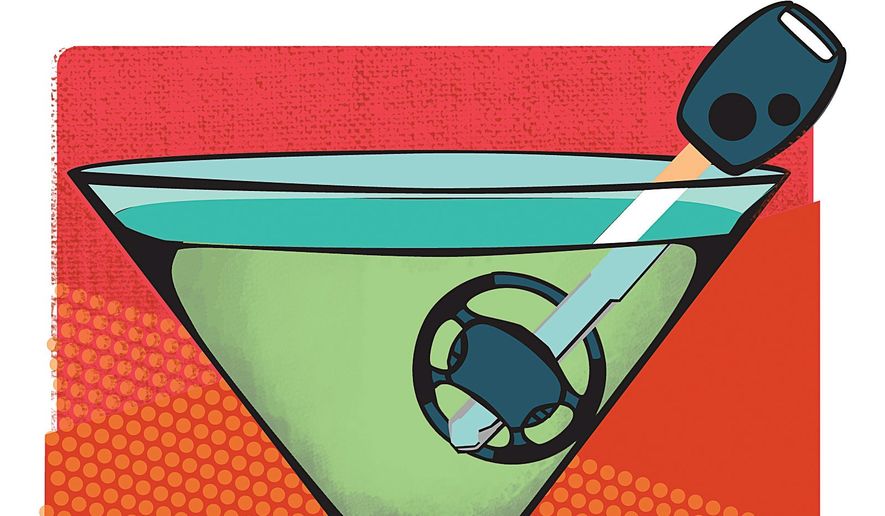OPINION:
The Washington Post recently ran an opinion column that supports legislation to require the installation of alcohol detection devices in all new vehicles, based on research that has so far cost taxpayers tens of millions of dollars. Supporters rightfully tout this sophisticated technology intervention for dangerous drivers. However, they are silent on how it will impact responsible consumers.
For reasons of manufacturer liability, these devices will likely disable an engine if the want-to-be driver has a blood alcohol concentration (BAC) level well below the current 0.08 DWI threshold. And that’s if the device’s BAC reading is accurate. Some sober people could be left stranded in a parking lot because of a malfunction — which isn’t difficult to imagine considering the intricate measuring device must endure dramatic temperature shifts and constant road vibrations. Applying a “Six Sigma” standard — meaning devices are 99.99966 percent accurate — Americans will still suffer thousands of false readings per week that disable cars without notice or cause.
Only Utah has experimented with lowering the BAC limit beyond 0.08. In 2019, the Beehive State became the first to adopt a neo-prohibition law that criminalizes consuming little more than a single glass of wine prior to driving. More specifically, the legal BAC limit dropped by 40 percent from 0.08 to 0.05. As a consequence, the lives of social drinkers at restaurants can now be up-ended for behavior that is legal and considered responsible in every other state.
We’ve heard some of these horror stories firsthand.
In one instance, a 39-year-old woman with no prior dealings with law enforcement was pulled over after leaving a friend’s house (for not immediately pressing the gas when a traffic light turned green). The woman, who enjoyed a couple of drinks with friends truthfully informed the officer about the modest level of alcohol she had consumed that evening.
The news triggered the officer to conduct a set of field sobriety tests — a series of tasks that measure balance, coordination and awareness. She passed all of them with flying colors, but that didn’t matter. A subsequent blood draw indicated the woman had a BAC of 0.06 — one hundredth of one percent above the state’s new arrest level.
The following months were a nightmare.
Her driver’s license was suspended for 60 days, which made getting to the grocery store a complex task. She spent over $10,000 in fines and attorney fees, as well as paid for court ordered substance abuse classes. That is only one story out of a handful we’ve uncovered revealing a cycle of unnecessary misery courtesy of duplicitous government policy.
Proponents argue the 0.05 law improves traffic safety because drivers are dangerous even at these low BAC levels. The National Transportation Safety Board (NTSB) — a government agency best known for locating the black box after a plane crash — is one of the policy’s biggest cheerleaders. In recent written testimony, the NTSB noted that impairment is “present with BAC levels as low as 0.01 percent.” Do you see where this is going?
In a natural experiment, data shows alcohol-related traffic fatalities dropped in Utah during 2019, the year after the .05 policy went into effect. But fatalities also dropped in 30 other states during the same period and some experienced a bigger decline than Utah.
It’s no surprise that dumbing down the definition of “drunk” is not a solution to stopping drunk driving. It acts more as a public relations prop to virtue signal “tough on drunk driving.” The vast majority of alcohol-involved traffic deaths occur well above Utah’s previous 0.08 standard. That’s where limited traffic safety resources should be focused; not to fund the arrest of people which university research shows are less impaired than drivers talking on a hands free cell phone (fine for that behavior: zero).
Low BAC arrest levels are more stunt than solution. Wrong way crashes on free-ways in Utah — frequently a result of substance abuse — jumped by 30 percent from 2019 to 2020. These drivers deserve the full force of the law. But conflating those people with moderate social drinkers is outrageous. As are the Utah legislators who voted for it. Former Gov. Gary Herbert — who signed the state’s 0.05 bill into law — is a prime example. Federal government studies indicate driving while over the age of 65 is more dangerous than being at 0.05 BAC. Mr. Herbert and many legislators who voted for the law fall into that age demographic. I doubt they have sworn-off driving.
Lawmakers need to focus on removing legitimately dangerous drivers from the road without casting too wide of a net that will only distract from the real problem. Lowering the legal BAC limit directly or going through the backdoor is not the solution.
• Richard Berman is president of Berman and Co. in Washington, D.C.




Please read our comment policy before commenting.